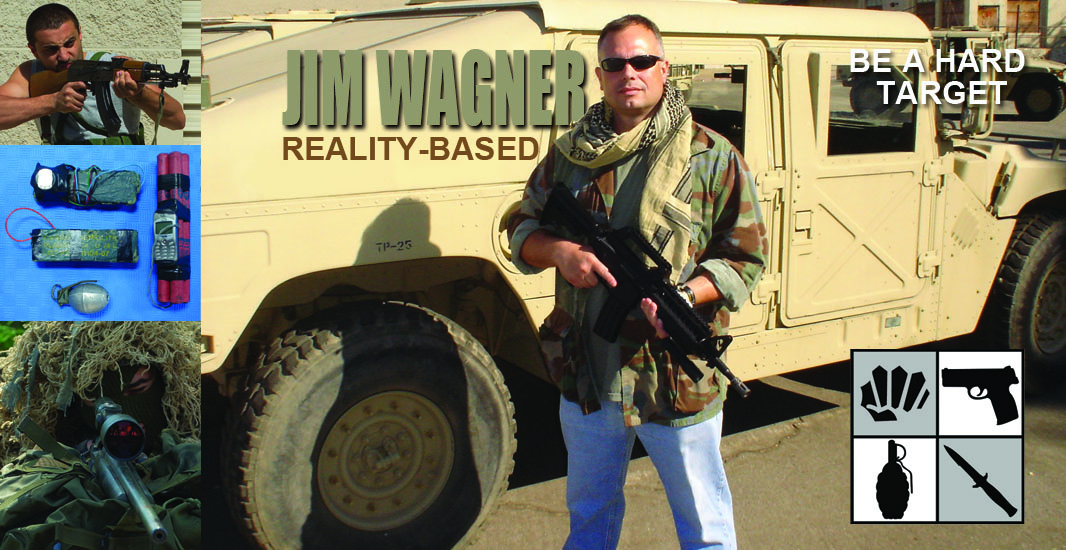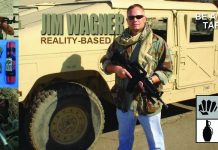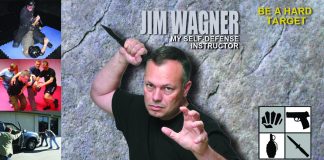Reality Based Training With Airguns
Most violent crimes today are committed by armed criminals, be it with knives or guns, and yet most martial artists spend the majority of their time practicing against empty hand opponents. If you have been paying attention to the news lately, you soon come to the realization that your self-defense training should be more weapons oriented and less empty hand centered. Even for those few martial artists that practice gun disarming techniques, often times the training is unrealistic and does not accurately parallel the realities of actual criminal and terrorist attacks. If you say that your gun training is realistic, then there is just one word to prove it – PROJECTILE.
If you’re not using training guns that actually fire projectiles, then you’re training is not reality-based. The way to achieve realism in your training is to purchase airguns, plastic 6mm balls, and eye protection. With a little safety training you can have realistic firearms scenarios a part of your current martial arts training, regardless of what system you study. In fact, the use of airguns will point out very quickly the strengths and weaknesses of your system when it comes to surviving gun attacks.
Qualified gun instructor
Before we go into the life-saving material that I have for you, let me first give you my firearms qualifications in a condensed manner, which many of you already know about from my years in Budo. I grew up around firearms, and at 18 years old qualified as Expert with the American M16 assault rifle when I joined the United States Army . Years later I received handgun and shotgun training at the Police Academy (The Orange County Sheriff’s Training Academy, Class 104). I was then on my department’s SWAT team learning all kinds of weapons, and then later became a firearms instructor and a Range Safety Officer (RSO) through the United States Marines. I taught pistol courses, assault rifle courses, and sniper courses to not only American police and military units, but courses for German GSG9, Brazilian GATE, Argentinean GOE, the Mexican police, the Spanish police, Canadian police, and the list goes on, including quite a bit of training with the Israeli police and military. I have been instructing firearms courses since 1992 all over the world, not to mention qualifying as Expert when I was a counterterrorist for the United States government in 2002.
Today, I devote a great deal of my time teaching civilians how to survive crimes involving firearms. I’m also the first instructor to introduce airguns into civilian martial arts training.
The two distance categories
There are two types of situations you may find yourself in as a victim of a gun crime. The first, and what all martial artists train for, is Reaching Distance Firearms Encounters. This is when the opponent is within reaching distance. The rule is If you can touch the gun, then you can take the gun.
The second most common situation is what we in the Reality-Based Personal Protection system call Beyond Reaching Distance Firearms Encounters. This is where it is virtually impossible to get to the opponent’s gun in an attempt to do a disarm technique. From this distance if you make a sudden move for the weapon, and the criminal happens to have their index finger on the trigger, which they will, then you may startle him causing a sympathetic reflex (the involuntary action of pulling the trigger due to muscle contraction).
Equipment that you will need
The equipment people need to begin realistic training are airguns that shoot a 6mm plastic ball projectile at an accurate distance of 21 feet / 7 meters. These replica plastic or metal airguns are legal in most countries, even those with very strict gun laws such as Japan and the United Kingdom, because the velocity of the projectiles are very low, yet strong enough for some realistic training. Of course, you should check out your local laws first before embarking on this type of training. You still need to use common sense, and not be waving them around in public since a police officer may mistake them for the real thing, and you find yourself at real gunpoint. A Google search of airguns or air soft guns will net you a lot of good distributors.
The next piece of equipment that you need for safe training, or anyone observing the training, is wrap-around eye protection. Although these projectiles are not traveling fast enough to break skin, they can put out an eye. Once you have your 6mm projectiles (plastic and not the metal ones), you are ready to begin your realistic gun training.
Scenario training
Your first scenario can be a very simple one, but one very few martial artists ever train for. Have a group of students standing around in the training room as if it were a train station or an international airport. A gunman then runs into the room and starts shooting at the crowd from 21 feet / 7 meters away. Now, let’s see how people’s martial arts training really works!
In this particular scenario there are two options. First, if a person is near cover (a large object that one can get behind, and which is solid enough to stop bullets or fragmentation) or concealment (something that may not stop bullets, but large enough for a person to hide behind – after all, out of sight, out of mind), then they need to get behind it. Second, if a person cannot get to cover or concealment, perhaps they are in the middle of the room, they need to dive to the ground and keep a low profile so as not to get shot. The first thing soldiers learn in battle is to get to the ground if there is no cover.
When it comes to Reaching Distance Firearms Encounters a simple scenario is to put loaded airguns into a students backs. If the students attempt to move, the suspect (the trainer) pulls the trigger. The 6mm ball that leaves the barrel does not lie. If students are too slow in turning to perform the gun disarm, then they will get hit with the projectile, which has a nice little sting. If they can turn quick enough to avoid being shot, then that is what it is all about. Of course, a little trick to spin around faster is to pivot on the stationary foot rather than turning like a door on a hinge.
Final advice
In my Reality-Based courses I cover countless gun situations, but the limited space I have here in this article prevents me from describing any more to you. Guns are everywhere, and you can’t ignore them, or the trends involving them. Using airguns will help you to become more “reality-based.”
Be A Hard Target.




